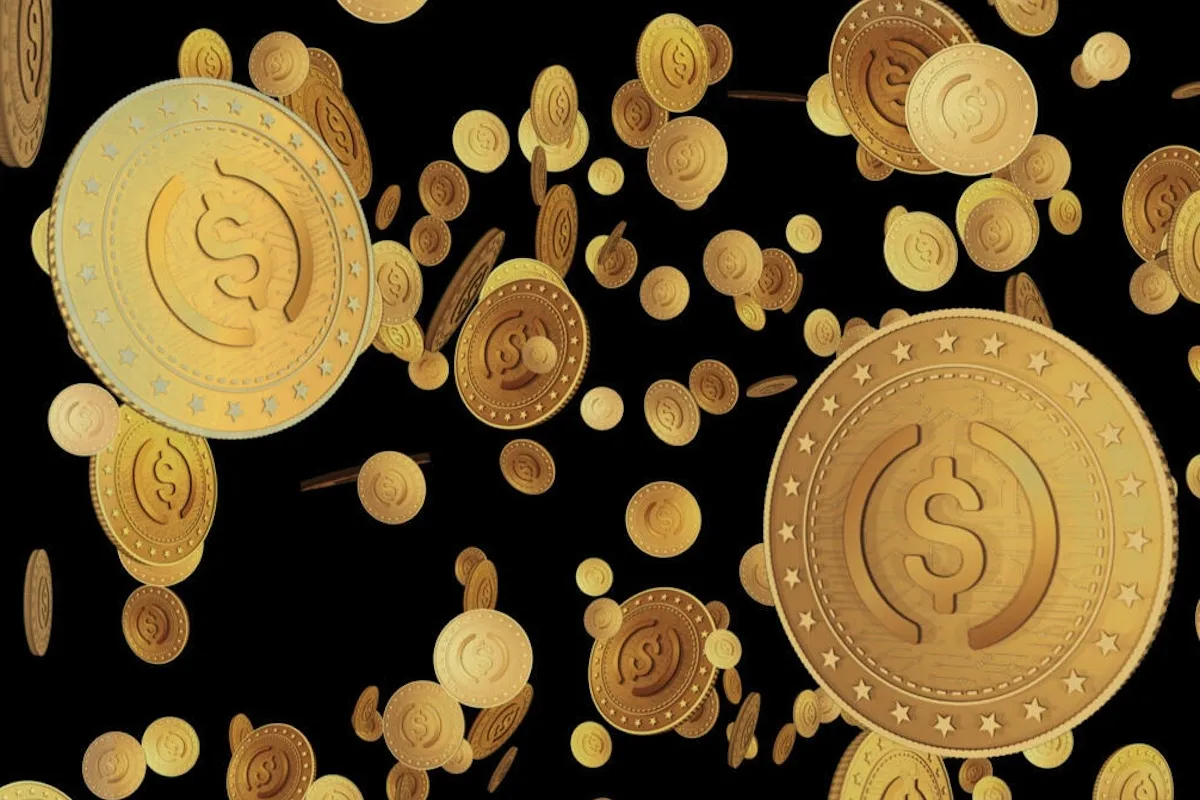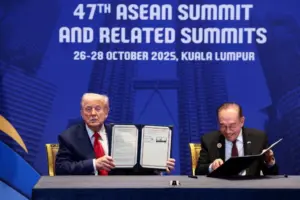US plotting dollar ‘rug pull’ with crypto, gold and lies
If you are a central banker entrusted with managing your nation’s foreign exchange reserves or a steward of a sovereign wealth fund in a developing country, heed this urgent warning: act decisively and swiftly to safeguard your assets, or risk catastrophic losses.
Delay could see the value of your reserves collapse by as much as 95%, thrusting your economy into a maelstrom of devaluation and instability. The foreign exchange you oversee is on the brink of a new kind of crisis, driven by the fragility of the US dollar.
Long the bedrock of global finance, it’s now a potential harbinger of economic ruin for nations tethered to its flagging fortunes.
Anton Kobyakov, a senior adviser to Russian President Vladimir Putin, delivered a bombshell revelation at the Eastern Economic Forum in Vladivostok last week that should have jolted every reserve manager.
He warned that the United States is orchestrating a systemic reset, wielding cryptocurrencies and gold as tools to erase its staggering US$37.4 trillion debt burden. This is not mere speculation, but a calculated alert from a high-ranking official, sounding the alarm on a scheme that could upend the global financial order.
Kobyakov’s assertion is clear: America is preparing to rewrite the rules of the market, using stablecoins and gold revaluation to offload its fiscal liabilities onto the world, leaving foreign creditors—central banks, sovereign funds and investors—holding devalued assets.
The US faces a “buyer’s crunch,” a crisis of confidence as major creditors like China, Japan and others divest from US Treasury securities, once considered the gold standard of safety, and pivot to gold to shield their reserves from a potential dollar collapse. This shift is not merely a precaution, but a direct response to the erosion of trust in the dollar’s stability.
The fewer buyers of Treasuries, the higher the yields the US must offer to sustain its debt-ridden system, creating a vicious cycle that deepens the crisis. With debt servicing costs spiralling and traditional economic measures failing, Washington is turning to unorthodox tactics to preserve its financial dominance.
Central to this strategy is the GENIUS Act, signed into law by President Donald Trump on July 18, 2025. Ostensibly, the legislation establishes a regulatory framework for stablecoins—cryptocurrencies pegged to the dollar to maintain value stability, akin to a digital equivalent of cash.
Treasury Secretary Scott Bessent has trumpeted the act as a bold step toward embracing a “digital payments revolution,” positioning the US as a leader in financial innovation.
The framework includes anti-money-laundering safeguards and mandates that stablecoin issuers hold high-quality liquid assets, primarily US Treasuries, as reserves. On the surface, it appears as a progressive move to modernize finance, ensuring the dollar’s primacy in a digital age and creating new demand for US debt.
But beneath this polished narrative lies a more sinister motive, one that Kobyakov and other critics have exposed as a Trojan horse for perpetuating American financial hegemony. Stablecoins, backed by Treasuries, could absorb trillions of dollars in US debt, creating an artificial market for Washington’s IOUs disguised as a “cloud-based digital treasury.”
Central banks, sovereign funds, and retail investors worldwide, lured by the promise of secure, efficient digital dollars, may amass these stablecoins in vast quantities.
Yet, Kobyakov warns of a devastating endgame: once sufficient US debt is tokenized into these digital assets, America could de-peg them from the dollar or devalue them drastically— perhaps to a mere five cents on the dollar.
Such a move would obliterate 95% of the value held by stablecoin owners, slashing America’s $37.4 trillion debt to under $2 trillion without the political fallout of an explicit default.
The ripple effects would be catastrophic, even for central banks that avoid direct exposure to cryptocurrencies. The devaluation of stablecoins would tank the value of US Treasuries, which many reserve portfolios hold in abundance. These securities, sought after for their high yields during a time of rising rates, could lose their value overnight, leaving foreign creditors with substantial losses.
To dismiss this scenario as alarmist is to ignore history’s lessons. The US has executed such resets before, each time shifting the burden of its fiscal excesses onto the global stage.
In 1934, President Franklin D Roosevelt revalued gold from $20.67 to $35 per ounce, devaluing the dollar by 41% and eroding the purchasing power of dollar holders worldwide to ease America’s debt accumulated during the Great Depression.
In 1971, President Richard Nixon severed the dollar’s convertibility to gold, ushering in the fiat currency era and a decade of inflation that halved the real value of global reserves. As Kobyakov aptly notes, America’s mantra has long been, “Our dollar is your problem.”
Today, the signs of another reset are unmistakable. A recent US Federal Reserve research note explored official reserve revaluations, citing examples like Germany and South Africa, which have used gold valuation gains to offset debt pressures.
The note implicitly considers how the US could leverage its 261.5 million ounces of gold, currently valued at a mere $42.22 per ounce on the official balance sheet, against a market price that has recently hit a record of over $3,600. Bessent has openly mused about revaluing gold to “monetize the balance sheet,” a euphemism for inflating the nominal value of US assets to offset debt.
During the Biden administration, discussions of a potential debt default surfaced, underscoring the gravity of America’s fiscal predicament. Trump, ever the showman, appears poised to reprise the strategies of Roosevelt and Nixon, blending stablecoin devaluation with gold revaluation to engineer a bailout that preserves the facade of American solvency.
This scheme is not merely about debt reduction; it is about control. By promoting stablecoins as a global payment system, the US aims to entrench the dollar’s dominance in a digital guise, forcing foreign economies into a financial ecosystem where Washington holds the reins.
Should the US execute this “global rug pull,” as Kobyakov terms it, the fallout for developing economies would be dire: eroded reserves, skyrocketing import costs and inevitable capital flight.
The principles guiding reserve management—safety, liquidity and yield—are now in direct conflict with the realities of a dollar-centric system. US Treasuries, once considered the epitome of safety, are now viewed as a liability. Liquidity in dollars offers short-term flexibility but courts long-term ruin, while high yields mask the peril of a systemic reset.
Contrast this with the strategic shift of the BRICS bloc—Brazil, Russia, India, China, South Africa and their expanded partners. At the 2024 Kazan summit, BRICS committed to anchoring 40% of its assets in gold and 60% in local currencies, laying the foundation for a commodity-backed financial system.
This move rejects the fragility of fiat currencies, embracing a monetary order grounded in tangible assets and real-sector production. Gold, alongside other precious metals, emerges as the ultimate store of value, immune to the manipulations of digital currencies or fiat resets.
BRICS’ gold-backed trade mechanisms, potentially tokenized for efficiency, signal a multipolar future where economic sovereignty trumps subservience to a single hegemon. For reserve managers in developing nations, the path forward is clear but urgent: diversify aggressively and decisively.
Reduce overexposure to US dollar-denominated assets, particularly Treasuries, which are no longer safe havens but ticking time bombs. Prioritize physical gold bullion and other precious metals, which offer unassailable safety and retain value through any reset.
Enhance liquidity by diversifying into regional currencies and bonds, reducing reliance on the dollar’s fleeting stability. Seek yields in non-dollar assets or commodity-linked instruments to mitigate the risk of devaluation.
History teaches that America’s resets are not anomalies but deliberate strategies—predatory moves cloaked in the rhetoric of innovation. To ignore Kobyakov’s warning is to court the fate of past victims forced to bear the cost of America’s profligacy.
The world is not merely transitioning to a new financial system; it is breaking free from the shackles of fiat money, moving toward a commodity-anchored order where gold and real assets reign supreme.
Developing nations must act now to shield their reserves from the fallout of America’s gambit. Failure to do so risks not just financial loss but the erosion of economic sovereignty itself. The clock is ticking, and the dollar’s house of cards is teetering. Protect your nation’s wealth before it collapses under the weight of American ambition.
Source: Asia Times





